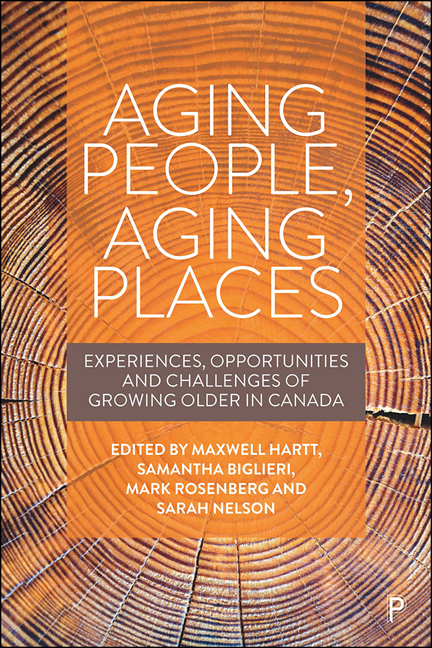5 - Urban practitioner vignette
Published online by Cambridge University Press: 18 December 2021
Summary
In this vignette, we examine the challenges and opportunities of aging in urban Canada. In addition to sharing our own experiences of growing older in a major Canadian city, we also call upon the work we have been doing to help the city become a better place for everyone to age. As local government efforts have continued to fall short, residents (like us) have begun to take matters into their own hands. In this vignette, we summarize some of the challenges for creating an age-friendly community in Calgary, introduce our organizations, and outline some of the obstacles and opportunities we have faced. Finally, we provide some recommendations for other organizations looking to make an impact in their communities.
Challenges for creating an age-friendly community in Calgary
One of the most concerning aspects of aging in Calgary is that the majority of housing available for seniors is extremely expensive. It is far cheaper for people to stay in their own homes, only paying for taxes, utilities, and maintenance. Another problem in Calgary is the practice of keeping roads and cycle paths safe during the winter, but not the sidewalks. Ploughing and piling snow in front of bus stops makes boarding the bus difficult and puts pedestrians at risk by forcing them into designated bicycle lanes. Public transportation is not subsidized by the government, and bus pass prices have recently been raised. This means that low-income seniors may not be able to afford the bus, which could contribute to increased isolation and, as a result, a decline in wellbeing.
Older people in our local community often feel like they aren't a priority. The City of Calgary does not seem interested in improving public services for older adults. They would rather, for example, make an incredibly expensive financial investment into a privately held NHL hockey arena. The order of priorities neglects the importance of building strong community links and moving towards a more intergenerational city. It has also recently been announced that community pools will be closing, which currently provide safe places for people of all ages to exercise. Even though it is claimed that Calgary is a World Health Organization designated ‘Age-Friendly City’, the political decisions made about public investments show it is becoming less so.
- Type
- Chapter
- Information
- Aging People, Aging PlacesExperiences, Opportunities and Challenges of Growing Older in Canada, pp. 73 - 78Publisher: Bristol University PressPrint publication year: 2021

